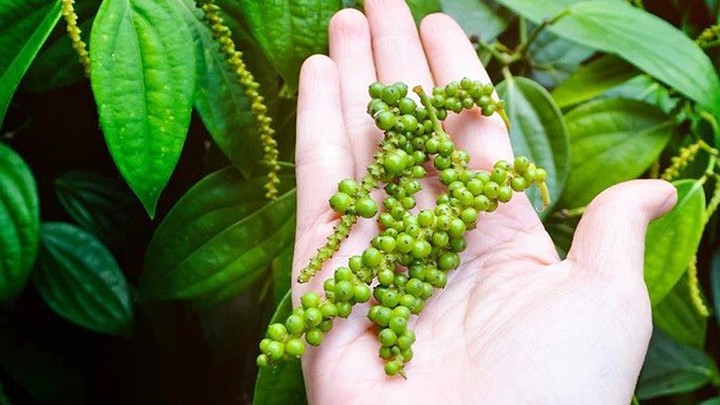Mr Harry Ta

Mr Sephilon Dinh

Ms Jenny Trinh

Mr Hoang Ta

Pepper Prices on October 5, 2023: Dak Nong Remains Stable while Markets Decline
October 5, 2023

The pepper market on October 5, 2023, witnessed a general decline in prices, with Dak Nong province in Vietnam maintaining stability amidst these fluctuations. Prices ranged from 68,500 to 71,500 Vietnamese dong per kilogram. The International Pepper Community (IPC) continued to report a drop in pepper prices in Indonesia. However, they kept the export prices for Vietnam unchanged, despite domestic market fluctuations.
In Dak Lak and Dak Nong provinces, pepper was purchased at a rate of 70,500 Vietnamese dong per kilogram. Meanwhile, in Gia Lai, the price decreased to 68,500 Vietnamese dong per kilogram, down by 500 Vietnamese dong. Similarly, in Dong Nai, the price also reached 68,500 Vietnamese dong per kilogram, a decrease of 500 Vietnamese dong. In Bà Rá»a – VÅ©ng Tàu province, pepper was priced at 71,500 Vietnamese dong per kilogram, marking a 500 Vietnamese dong decrease. Binh Phuoc province reported a price of 70,500 Vietnamese dong per kilogram, down by 500 Vietnamese dong. Prices remained stable in Dak Lak and Dak Nong provinces but decreased by 500 Vietnamese dong per kilogram in other regions compared to the previous day.
At the end of the latest trading session, the International Pepper Community (IPC) listed the black pepper price in Lampung, Indonesia, at 4,166 USD per ton, marking a 0.24% decrease. The price of Brazilian ASTA 570 black pepper stood at 3,450 USD per ton, while Kuching, Malaysia, held steady at 4,900 USD per ton. White pepper from Muntok was priced at 6,273 USD per ton, showing a 0.22% decrease, while Malaysian ASTA white pepper remained at 7,300 USD per ton.
Vietnamese black pepper traded at 3,500 USD per ton for the 500 g/l variety and 3,600 USD per ton for the 550 g/l variety. White pepper was priced at 5,100 USD per ton. Despite the continued decline in pepper prices in Indonesia, the IPC kept Vietnam's export prices unchanged, despite the domestic market's fluctuations.
The strengthening of the US dollar had a significant impact on commodity prices, including black pepper. On the morning of October 5, the US Dollar Index (DXY), which measures the greenback's fluctuations against six major currencies (EUR, JPY, GBP, CAD, SEK, CHF), reached 106.77.
Experts believe that the economic strength of the United States continues to surprise the market. While the Fed's interest rate hike cycle may have ended, positive economic data could pave the way for additional rate hikes. The upward momentum of the US dollar is expected to continue to hinder the recovery of the pepper market.
The recent harvests in Brazil and Indonesia have flooded the market with a substantial supply of pepper. Increased imports through unofficial channels have also cooled the pepper fever in the Indian market. Additionally, importing countries still hold significant pepper reserves. These factors collectively put pressure on pepper prices. The market remains a tug of war between buyers and sellers.
In conclusion, the pepper market on October 5, 2023, experienced a decline in prices across various regions. Dak Nong province in Vietnam stood out as an exception, maintaining price stability. The global economic landscape, the US dollar's strength, and various supply and demand factors continue to influence pepper prices, creating a complex and fluctuating market scenario.
According to Kinhtedothi